Growth hacking is the buzzword for startups. Forget “pivoting” and “iterating.” It’s all about growth hacking.
That’s the thing.
It’s almost annoying for those who have heard about it thousands of times, and it’s confusing for those who don’t know what it is.
Like it or not, growth hacking is happening.
And it’s the reason we get to see a few new startups each year with absolutely ridiculous growth rates.
Or, as a more recent example, look at Airbnb.
Growth hacking has only been around for a few years, but it’s already catching fire. Every startup is looking for growth hackers.
The reason is obvious: everyone wants to grow ridiculously fast and acquire millions of users and dollars in revenue.
But, what does growth hacking even mean?
It’s time to answer that question once and for all. I’ll even show you how to do it in this growth hacking guide.
I’m going to cover lots of information, but you can skip down to any section below
- Definition
- Overview
- Step 1: Make sure you create a product people actually want
- Step 2: Don’t target everybody
- Step 3: Acquisition
- Step 4: Activation
- Step 5: Retention
- Step 6: Revenue
- Step 7: Referrals
- Step 8: Improve your product continuously
Definition
I think I’ve already done a fairly good job at explaining this a while ago in my definitive guide to growth hacking, but here’s a quick reminder.
The phrase is only five years old.
Sean Ellis coined it in 2010 when trying to come up with a new job description. Sean is the OG (original growth hacker).
He helped lots of startups achieve accelerated growth (for example, Dropbox) as a consultant.
However, whenever he would leave a startup to pursue new ventures, he would have a tough time finding a replacement.
He needed someone who to be in charge of growing the startup. He went through hundreds of applications each time, all outlining a job for marketers.
But pure marketers couldn’t do this job.
Modern software products are entirely different from traditional products, and so is their distribution.
Marketers felt that they had to consider budgets, expenses, conversions, etc.
A growth hacker does not care about any of these things. Sean, in his own words, was looking for “a person whose true north is growth.”
As growth is the make-or-break metric for startups (either they grow fast enough or they die), that’s the only metric that a growth hacker cares about.
An engineer can be a growth hacker just as much as a marketer can. What matters is their focus.
Due to the startup culture, they often have to use analytical, inexpensive, creative, and innovative methods to exponentially grow their company’s customer base.
That’s the only thing that a growth hacker does.
To really understand what growth hacking can achieve and what your mindset needs to be, I’ll show you a few examples of growth hacking done right. Then, you can apply the same principles to your business.
Overview
You can potentially do growth hacking offline. For example, you might count McDonald’s popping up at every interstate highway exit in the 1950’s as growth hacking.
They realized that interstate highways were going to be big, so they showed up where they knew customers would be in large quantities.
Yet, this fairly new concept mostly applies in the world of startups. They don’t have big marketing budgets, so they can’t rely on Super Bowl ads or Times Square billboards.
That’s why they must find cheaper ways to market themselves.
What they often do have is a very scalable product.
Consider Dropbox, for example. What their cloud storage service provides is basically just disk space on servers that are accessible via the Internet.
They can always buy or rent more servers to provide more space for new users.
Or consider Uber. The taxi replacement service relies on regular people using their own cars to pick up others at location A and bring them safely to location B – and the payment goes through the app.
With over 260 million registered cars in the United States in 2015, this is also very scalable. They provide the app, which an infinite number of users can download and use via the web. The users provide the rest.
A traditional product, like soap, is not very scalable. Every time you run out of soap, you have to buy new soap.
But, every time another user signs up to Facebook, your experience gets better.
Plus, the way that the product works allows it to market itself. If you use an Uber to go to your friend’s house on Friday night and they ask you how you got there, you say, “I took an Uber.”
Naturally, the word spreads. If you like the idea and have friends who could benefit from using the service (in addition to you benefiting from your friends being on the platform), you’re very likely to suggest it.
That’s how growth hacking uses word-of-mouth on a big scale to achieve the exponential growth rates that we’ve seen.
Alright, time to look at some examples of startups that have done growth hacking the right way.
But today, I won’t just show you great examples. I’ll also give you a simple, eight-step process that you can follow to try and apply growth hacking in your own business.
Step 1: Make sure you create a product people actually want
You’d think this is obvious for any company, right?
Well, back in the day, you could sometimes get away with a mediocre product if you just marketed it enough.
For example, Coca-Cola introduced lots of other soft drinks over the years like Sprite and Fanta. Most of them didn’t taste as good as Coke.
(And, do any of you remember the new coke?)
But, through extensive (and expensive) advertising, they made them popular, and now they litter the drink aisle at grocery stores alongside Coke itself.
Doing this today would be much harder, as word about a new product spreads extremely
quickly.
If your product is bad, the world will know it faster than you can imagine.
For example, when United Airlines workers were passing luggage to one another by throwing it around in 2009, they ended up breaking a customer’s guitar.
They admitted to doing it, but they refused to compensate the guy for his loss.
And what was the result? Not one, but three songs, including videos, came out about crappy United Airlines service.
The first one has gathered 15 million views so far:
That’s pretty bad PR for United. If your product sucks, it can disappear in less time than it took you to build it.
What’s the solution to this? It’s simple: Get feedback.
You have to get your product out there, as fast as possible, to start collecting feedback and keep improving your product-market fit on a regular basis.
I learned this lesson the hard way. When we started Kissmetrics, we used all of our funding to build the product.
It took us a year to build it. And when we released it, we learned that our customers were happy with the metrics their social networks were already offering.
That’s not good.
Two steps that you must take to ensure that your product hits the target
Here’s how to do it the right way:
1. Start by asking and answering questions, not by developing a product that has awesome product-market fit.
We did this with Crazy Egg. People were coming to us with questions about customer behavior.
They said, “We’re spending all this money on advertising, but we don’t actually know what the customers are doing, where they are clicking, or what their behavior is.”
Only then did we start digging deeper into the topic and thinking about creating a product that solves that problem. We didn’t just develop a product that “felt like a great idea.”
2. As soon as you have an idea, start getting feedback.
Don’t hide in your basement, develop something for six months, and then come out with it. Wave it and ask, “What do y’all think?”
Ask for feedback right away.
Imagine that a friend tells you about a problem with her company over dinner. Together, you sketch out a solution to it on a napkin.
The moment you have that sketch, you can show it to other people.
We pushed out the first version of Crazy Egg after only a month of development to start collecting feedback. Then, each month, we released an improved version.
Thanks to our quick release and constant collection of feedback, we had a decent product that customers were happy to pay for after only six months.
Not only that, but the press and buzz created from releasing the updates publicly also helped us create a waiting list of 10,000 people by the time we launched Crazy Egg.
And what was our customer acquisition cost for these 10,000 paying customers? It was zero.
Another example of a company who definitely nailed the feedback part is Instagram.
Instagram’s growth has been insane.
Originally, the founders dabbled with a social network app called Burbn for whiskey drinkers. They realized that the most-used feature of the app was their photo sharing mechanism.
Only then did they begin looking at photography apps, which they thought was a saturated market already.
Talking back and forth with users, they eventually realized that for all the apps out there, sharing photos was either too complicated or not the main feature of the app.
They simply took the best parts of all the apps they knew, like Hipstamatic’s photo filters and Burbn’s way of sharing, removed everything else, and voila! They produced a great app that everyone already wanted.
Combine this with brilliant timing (Instagram launched at the same time as the iPhone 4), and you know how they got 25,000 installs on their first day, reaching a million users within two months.
Validate your idea to make sure it doesn’t completely fall flat
Another part of making a great product is validating your product idea.
Do you want a sure-fire way to know that people want what you’re about to create?
Ask them to pay for it.
If you want to create an app that shows people the best tea spots in town and you know it’ll cost you $1000 to develop, getting $20 from 50 friends (or $50 from 20 friends) would solve that development cost problem for you.
And, you would be 100% sure that:
- Your friends want you to make the app (and so potentially other people are interested in it as well).
- You’re not wasting a lot of your own money if it doesn’t pan out.
It might seem counterintuitive to ask for money before you have a product.
But, if you think about it, you’re paying in advance for things all the time: movie tickets, flights, concerts, events, gym memberships, and all kinds of things.
You pay for all these things whether you end up going or not.
Validating your product is even better. In some cases, you can just give back the money if you don’t end up building it.
Author Ryan Holiday sold over 2,000 copies of his book “The Obstacle is The Way” in advance, paying for his oatmeal during the time he wrote the book and making sure that it would be a success once he released it.
Do you want another example of a successful product-market fit validation? Look at Airbnb?
Here’s a great infographic about Airbnb’s history.
The idea was born out of necessity. The founders, Joe and Brian, couldn’t pay their rent. So, they thought they’d rent out three air mattresses on the floor of their apartment to make money.
When three people showed up, each of whom paid them $80 for a single night, they thought: “Hm, this might be worth exploring more.”
Once they launched at South by Southwest (SXSW), they kept getting bookings. But they only got a few bookings that made them about $200 per week.
Nevertheless, they knew the interest was there. All they had to do was improve the product.
Put out free content if you have don’t have an idea
If you don’t have an idea, just start for free.
Create a blog or YouTube channel and provide content around the niche that you want to build your business in. Share your content on social media.
This is the simplest way to learn what people like and dislike and what they want and need. It’s a great channel to get feedback on your ideas.
What’s more, as you’ve seen, if you collect email addresses, you can even build an audience of eager and loyal followers who can’t wait until you actually launch a product.
You can do so by giving away an e-book, developing a quiz, or coming up with an email series or a set of cool videos. Making videos is easier than ever now with smartphones and access to seamless video editing solutions like InVideo.
Give people the chance to get access to some of your best content in exchange for their email addresses, and you’ll instantly start building an audience.
This is by far the easiest way to start a business today, and it’s absolutely risk-free.
Okay, let’s assume you have an idea and you’ve already validated it.
Next, we’ll look at how you can avoid some of the mistakes that Airbnb made that stalled their initial growth.
Step 2: Don’t target everybody
Guess who Airbnb’s target customer was in the beginning?
It was everyone who traveled.
Just look at their initial three customers – the ones renting their air mattresses. They were a 30-year-old Indian man, a 35-year-old woman from Boston, and a 45-year-old father of four from Utah.
Where is the intersection? What connects these people? What do they share?
You see, there is a life cycle that every new and innovative product must live through. It’s called the law of diffusion of innovation, and it looks like this:
To reach the majority of people, your product must first successfully pass through innovators and early adopters.
These are small groups and communities that you need to target explicitly. Geoffrey Moore has written an entire book called “Crossing the Chasm” that talks about this phenomenon.
Products either captivate the first 15% of the market or they go to die there.
If your target customer is “everyone,” there’s no way to growth hack through that first 15% because you don’t even know who to convince to buy.
And, how do you get this right?
How to target the small minority of people who get the most out of your product
You should create a customer profile. Consider all aspects of your product. Then ask yourself:
Who would get the maximum benefit from our product?
Be specific. Describe a real person as best as possible.
If Dropbox were to tell you about their ideal initial customer, they’d probably say something like:
A 22-year-old white male who is tech-savvy, lives in San Francisco or the Bay Area, is skinny, has only a few really good friends, wears XYZ brand clothes, and spends most of his time online.
That’s how detailed you should be.
And, in the beginning, you actually want to cater exclusively to those people’s needs.
Traditional products like books published by a traditional publisher have to create a lot of buzz before they even launch to make sure that the launch is successful.
With a modern software product, what happens before the launch isn’t nearly as important as what happens after the launch.
Dropbox didn’t throw a huge invite-only launch event. They just released to the public at TechCrunch50 in 2008.
Their much smarter move was to make the service invite-only after the launch.
That’s clever, huh?
They launched it at an event where their ideal customers gathered every year and then created an aura of exclusivity around the product.
People looking to join the service needed an invite from current users to get in. Since everyone wanted to know what Dropbox was about and how it worked, the waiting list quickly blew up.
But, mystery almost always brings skepticism along with it. So, in order to give potential users an idea of what Dropbox was about, they made a short demo video.
They custom-tailored that video to the users of Digg, a very popular social news network at the time. Again, the users were all their ideal targets: Internet geeks, techies, and nerds.
Drew Houston, one of the founders, placed about 12 inside jokes throughout the presentation. Within 24 hours, the video had 10,000 diggs (which are the equivalent of likes), the word spread like wildfire, and their waiting list jumped from 5,000 to 75,000 users.
Compared to spending $300 per acquisition for a $99 product on Google AdWords, this seemed to be the better strategy for them, and they now have 500 million users.
These types of growth jumps are crucial in the early days of a startup to push through the 15% market share boundary that a product needs in order to take off.
Here’s another great example of spreading the word in your community: Hotmail.
If you’re a Gmail user, Hotmail seems old school, and you’ve probably long forgotten it. But, since Microsoft acquired Hotmail, they have grown to over 400 million users. They were ahead of Gmail until around 2012.
What did they do that cause Microsoft to buy them out in the first place? They grew fast.
When debating marketing options, such as billboards, their investor had an idea. Why not just put a note at the end of each email that their users send that says, “PS: I love you. Get your free e-mail at Hotmail”?
It was definitely worth a try, and it increased sign-ups to 3,000 per day, doubling their user base within six months – from 500,000 to 1 million.
After that, growth became even faster. Just five weeks later, they counted 2 million users.
12 million users is pretty good – especially when that meant every 5th person on the Internet.
By keeping the ‘ask to share’ within their system, they made sure that they hit the right target group.
Hotmail email users sent emails to their friends who were likely to be similar to them and therefore also ideal customers.
Uber did the same thing. They waited a full year for the popular festival South by Southwest (SXSW) to give out free rides to hipsters and techies, promoting their service instead of relying on ads.
But all of these success stories bring up an important point:
How can you spot a raging success waiting to happen? What’s the difference between a brilliant idea and a bad one?
At this point, we turn to pirate metrics.
The PayPal Mafia is a group of entrepreneurs and investors who all hit it big with PayPal and then went on to found other companies in Silicon Valley.
Dave McClure was a marketing director at PayPal who also started a few companies after. But the most notable has been the tech incubator/accelerator 500 Startups.
And Dave understood the critical differences between a growth hacking mindset and brand marketing ideas.
About a decade ago, Dave published his view on startup metrics. The idea was to measure a few key growth-drivers and ignore everything else.
He outlined the metrics by funnel stages in the helpful acronym AARRR. Users then affectionately nicknamed it “Pirate Metrics.”
The funnel stages outlined included:
- Acquisition: How you get people to know you by name.
- Activation: How to give users a happy first experience.
- Retention: How you keep them coming back for more.
- Revenue: How you monetize them.
- Referral: How you get them to tell other people.
You could pick out a few key metrics for each stage and get an accurate view of how well your efforts (and ideas) are paying off.
Then, based on that knowledge, you know whether the startup idea has traction or whether you should pivot to something else.
The first stage at the top of the funnel is acquisition.
This measures exactly what it sounds like. You can look at new site or app traffic, or you can even look at new eyeballs to get an estimate of your reach.
How many people are you exposing to your messaging? Here, you’re looking at the performance of paid advertising, PR, SEO, and more.
Just be sure to avoid vanity metrics at all costs.
For example, if you spend money on Facebook Ads but all of those visitors bounce immediately, it was unqualified traffic to begin with. That means that you might be targeting the wrong people.
That’s an indication that you need to go back to flesh out those customer personas again.
So you can add layers to your acquisition metrics, such as all site visitors who hit at least two pages or stay at least ten seconds. That tells you these people were actually interested in what you have to offer.
The second step is to look at activation, which is the number of people sticking around after visiting your site or app.
Dave McClure refers to this as a “Happy First Visit.”
Sometimes, that means a hard goal like an opt-in or sign-up. But otherwise, it can also apply to quality visits where someone uses a key feature inside your app or spends longer than a minutes browsing site pages.
This is also the reason why I created Crazy Egg in the first place.
Google Analytics might tell you that 100 people visited your homepage. That’s helpful if you’re analyzing acquisition tactics like SEO.
But it’s not helpful if you’re trying to figure out what those 100 people were doing on your site.
You literally have no idea if they found the page helpful, if it did a good job giving them the information they were looking for, or if they were potentially interested in signing up.
And those things eventually dictate whether or not they become a paying customer.
That’s where Crazy Egg comes into play.
You can literally see based on their behavior and clicks whether they’re activating or not.
Getting people to your site is easy with ads. Getting qualified people is a little tougher.
But what about actually getting those people to opt in or sign up? That’s another thing entirely.
It tells you if people truly love your product concept or not.
After getting those activations, or happy first visits, the next step is to retain them over the long haul.
Think about mobile apps for a second.
You’re excited and eager to download that new app everyone is talking about. You head to the app store, click download, and can barely contain your excitement.
You use it for a few hours, and it was fun, but then stuff comes up. So you put it away.
And you never log in again!
You’re not alone. Seriously, everyone does this.
We’re on our phones more than desktop computers today. And 84% of the time that we’re on our phones, we’re inside mobile apps.
And yet the average retention for apps is awful. Check out this terrifying graph for app owners:
That’s telling you that almost 80% of users will leave and never return within just three days of downloading. That number gets even worse within a few months, rising up to a whopping 95%.
That’s why retention is so important. You spend money on ads or creating an awesome first experience, but churn will kill most startups.
You’ll lose customers faster than you can get them, and you’ll be out of cash (and business) in no time.
An old study published by the Harvard Business Review and Bain & Co showed that most new customers are unprofitable for a period of time.
We can debate the actual numbers today, but the same underlying principles still apply. Many new customers are unprofitable at the beginning because you have to spend money on ads, people, office space, etc.
To make matters worse, most SaaS companies only charge a tiny fraction of their value each month. That means you need to keep a customer for anywhere from three to six months (or maybe even a year) to get back in the black.
Most marketing blog posts focus on acquisition channels or tactics. They talk about how the “money is in the list” to get email subscribers to buy their first products.
They’re right… to a certain degree.
But true growth hackers know that the money is in the customer list. You can often increase revenue faster and easier by focusing on increasing customer retention rather than focusing on new acquisitions.
So unless you’re in the mobile app business, people dropping out after their first or second engagement is a bad, bad sign.
Not many companies will be able to build a viral referral loop like Dropbox or Facebook. The truth is that it takes a few special things happening all at once.
You need timing, an amazing product, and network effects. That happens when the use of the product by one person increases the value for another.
It’s like 1 + 1 = 3.
Either way, though, you still want to drive as many referrals as possible. Again, these are happy paying customers recommending you to their family, friends, and colleagues.
And once again, if you do it right, this should be easy money.
The more customers who spread the news for you, the less you have to spend on acquisition, which means the closer you are to profitability.
Your customers should be telling their friends and hyping your product. The Net Promoter Score is one of my favorite techniques to measure this because it’s so simple.
But you’ll have to keep reading below to see how to use it properly.
Everything we’ve been doing so far has had one goal in mind: Revenue.
Ultimately, people giving you cold-hard cash is the best form of product validation.
It might take a while to get there. It might take a few iterations or pivots to hit upon a winning combo.
But if you get the first four steps right, the revenue one should take care of itself.
Now you understand the framework for making growth hacking decisions. You saw how each plays a different role in helping you define success.
Next up, let’s start to dig deeper.
We’ll go into each one of these with specific strategies, tips, and hacks that some of the fastest-growing companies in history have used.
We’ll start at the top of the funnel with acquisition.
Step 3: Acquisition
Sean Ellis may have created the concept of growth hacking.
But Eric Ries helped popularize it to the masses.
Before Eric’s book, The Lean Startup, the tech and software communities were some of the only places where people knew of many of the core growth hacking ideas.
Eric helped put it on the map by formalizing how it could apply to companies of all sizes and in every industry around the world.
One of the most important topics in that book was about the three engines of growth.
These are the three most reliable paths companies can take to scale customer acquisition. But doing more than one of them at a time is next to impossible.
The trick is to figure out which kind works best for your own product type:
- Viral – Think of Dropbox. You grow primarily through other people referring you to their friends, family, or colleagues.
- Sticky – Think of Crazy Egg. You create an irresistible experience that keeps people around as long as possible (and thus, paying you more and more).
- Paid – Think of Groupon. You spend $50 to acquire a customer who will eventually be worth $500 to your business.
Each of those three ‘engines’ works. However, the degree to which each performs depends largely on your business.
Let’s go into each one now to see how and when each works best.
1. Go viral – It’s time to pull out the big guns. Going viral is different than targeting everyone, though.
This step just means tapping into bigger systems and bigger user bases and leveraging the reach of fellow products to really penetrate the majority of the market.
You’re still targeting your ideal customers, but you’re expanding to platforms where everyone is present.
Dropbox has killed it with the viral referral strategy.
Giving people free storage to recommend the product to their friends was literally genius because it did two things:
- It incentivized the Dropbox user to share documents with their service more frequently, and
- It introduced more people to the brand, giving people who’d never heard of them a little free sample.
When this refer-a-friend strategy started paying dividends, they took it to the extreme.
This was another key difference with Dropbox.
Many companies diversify too much. They put $100 here and another $100 there, seeing meager 1% returns on their investments.
All startups are cash-strapped. That’s even ones of ones that raise a ton of money.
The reason is that you’re often competing against massive conglomerates who have billions to your millions.
Small companies can’t diversify then. They need to put all of their eggs in one basket to generate the biggest returns possible.
If something’s not working, you change directions ASAP and try something else.
Dropbox cycled through a few different ideas until they landed on the viral refer-a-friend one. And when they saw it was working, they doubled-down by giving users even more space.
This sounds a lot like the Referral metric that should come further down the funnel. And it is to a certain degree.
But make no mistake: This is their leading acquisition growth lever as subscriptions increased by 60%.
Adding other actions, like connecting your social accounts for more storage, was like adding fuel to the fire.
However, it took them a while to figure out that this tactic would work so well.
For example, before hitting on this tactic, they tried a paid strategy with both ad campaigns and PR.
None of it worked, according to founder Drew Houston. So they kept iterating until they landed on something that did.
Incentives for each user to get more people on the platform are a good way to kickstart your viral marketing campaign, but letting your product market itself is even better.
Apple did so, and they made good use of this strategy their advertisements. Remember the popular iPod ads with the black silhouettes and the white headphones?
These ads were everywhere from 2004-2008.
By making their headphones white, Apple made sure that everyone would recognize them. Headphones were usually black, so by tweaking this feature, they turned all of their customers into walking advertisements.
Do you want another example?
WordPress is powering 29% of all websites online, and it’s free. But the free version has a catch, though.
Your domain will always show up as wordpress.yourdomain.com.
Everyone who visits your free WordPress blog will instantly know that it’s a WordPress website.
But, let’s talk about an even more powerful growth hack.
MySpace ruled the scene before Facebook took it over for good. They were one of the biggest platforms available.
They were so big, in fact, that YouTube piggybacked on their success to skyrocket traffic.
YouTube’s insight was to make videos easy to share. They freely created embed codes, encouraging users to add their videos to other sites like MySpace.
That put YouTube content in front of everyone.
First, they got the brand recognition. People started becoming familiar with who they were and what they did.
It also helped create backlinks and referral traffic by siphoning off the authorities of other sites.
Fast forward a few years, and YouTube now processes over 3 billion searches per day, making it the second largest search engine online.
Everyone’s darling, Facebook, used embeds as an early growth hack to make sure that they hit their target of acquiring 200 million new users in one year.
They gave users the option to show that they’re on Facebook in other places, like their blogs, websites, and in forums by creating different badges for them to embed.
The badges are still around today.
This created billions of impressions, hundreds of millions of clicks, and millions of sign-ups each month.
And, this isn’t the only giant using this strategy. Have you ever tried to share a YouTube video on your blog?
They make embedding videos super easy, so lots of people do it. They create the entire code and highlight it for you so that you just have to press Cmd+C (or Ctrl+C if you’re on Windows) and then paste it into your editor.
But that’s not the only reason it’s so popular. It’s also because YouTube videos are very shareable.
We also wanted people to embed their data from Crazy Egg – not a good idea.
Why?
What company wants to show their traffic, clicks, revenue numbers, and conversions?
No one does!
But, guess who wants to share the latest funny cat video they found? Everyone does!
Pro tip: Give people a reason to dig deeper into your embeds. The YouTube player automatically plays the next video or gives you a selection of related videos at the end of each video. That makes it highly likely you’ll switch to YouTube after watching an embedded video.
When you decide on whether you want to make your product embeddable or not, be sure that customers have a reason to embed, that it’s easy to do, and that you entice them to dig deeper into your embed.
There is something that’s even more powerful than embeds, though, especially if you get it right: integrations.
Did you know that you can increase sign-ups by up to 50% by simply allowing people to sign up for your service using one of their already-existing accounts on Facebook, Twitter, or Google?
Integrating your service to work seamlessly with another can give you very easy access to millions of potential customers.
PayPal was struggling to get a foot in the door with the majority of the market. Few retailers actually offered them as an option.
But, once they landed a deal with eBay and they offered PayPal as an option right next to Visa and Mastercard, the floodgates opened.
Their payment volume has even doubled in just the last few years.
Eventually, eBay acquired PayPal for $1.5 billion in 2002.
That’s a steal considering that PayPal is now worth not just more than eBay but also than American Express. Having one powerful integration was enough for them.
But PayPal and Facebook are old news. What about some more recent startups?
Integrations work just as well today. Only now, companies like Facebook and PayPal are the ones you want to integrate with.
Spotify is a company that did this.
Here’s what it looks like.
Integrating with Facebook was a very targeted move. Facebook was already a platform for sharing interests, especially music (in the form of videos, for example).
Spotify just made the experience better. By showing what your friends listened to in the app and the Facebook stream, people started to discover the app.
Tom’s listening to Jay-Z on Spotify.
Hmm, I wonder what that is. Let me check it out. Oh, it’s free streaming. Awesome!
And boom – Spotify got another use. And by the way, that’s exactly how they got me.
As with embeds, make sure that your integration makes sense for the users and that your onboard process is smooth so that both parties benefit.
Airbnb didn’t, which is why their growth hack eventually stopped working. Lucky for them, they didn’t need it anymore at that point.
When they started creating their listings, they really wanted to tap into Craigslist’s huge network.
But Craigslist didn’t make their API public, so the Airbnb guys had to create a very difficult technical solution.
Eventually, they made it work and people could cross-post their Airbnb listings with one simple click:
At the time, around 50 million unique users used Craigslist each month.
The listings went on to get massive exposure, leading to a huge period of user growth for Airbnb.
But let’s just say that it wasn’t a very endorsed procedure and not at all sanctioned by Craigslist. Eventually, they had to discontinue the integration.
Another concept similar to embeds and integrations would be “Powered by badges.”
These require a lot of testing and optimizing, though, since it’s impossible to know what works right away.
For example, with Kissmetrics we found that “Analytics by…” worked much better than “Powered by…”
Integrations, embeds, and badges are certainly among your best bets for going viral and getting a big enough chunk of the market for your product to become a hit.
Nevertheless, these examples are more ideas than “copy this” schemes.
You see, growth hacks usually stop working fairly quickly as more and more companies start exploiting them.
So, instead of trying to copy each of these examples, try to get into the right mindset to see untapped opportunities and new ways for you to use similar tactics to market your products.
So do you have to come up with some clever tactics?
No you don’t.
Here is an example of a startup that used growth hacking and is NOT a billion dollar tech startup:
Ever heard of Poster Gully? They are a marketplace that lets you buy and sell art and posters.
They’re able to grow their marketplace to $1 million with only a fraction of the cost by leveraging viral tactics such as well structured giveaways and affiliate marketing by recruiting “Campuspreneurs” to acquire users for them.
Pretty basic tactics leveraging the fundamental viral principal, right?
You don’t need to be fancy. You can simply test already working tactic out to see how well they work. If you get a good ROI, then double down and scale it!
2. Sticky growth – Facebook also has network effects with virality built-in. But they pursued new user growth in almost the exact opposite way.
Instead of trying to give access to the most people possible, they did the reverse.
Facebook started out only targeting specific Ivy League schools. You had to have an email address at each one to get access.
From there, they slowly expanded to other high profile schools. This restricted supply, fueling demand.
Facebook had virality, increasing the value for each user as more of their friends joined.
However, the platform is incredibly sticky. There’s virtually nothing else out there that compares.
The average person spends about an hour on Facebook each day. That’s almost as much time as people spend eating during the day.
And these trend numbers are only growing!
Facebook knows exactly what their users like and don’t like. Then, they manipulate those things like a master puppeteer to get people to continue logging in multiple times each day.
That means they have conquered the magic formula for a sticky product:
High retention + low churn + network effects.
Lars Lofgren, former Director of Growth at Kissmetrics, shows how churn can (and will) often start to erode new customer acquisition if you let it:
And he cites a simple rule of thumb for sticky products from Eric Ries:
The rules that govern the sticky engine of growth are pretty simple: if the rate of new customer acquisition exceeds the churn rate, the product will grow.
David Skok wrote what you could call the Churn Bible in his post on SaaS metrics. In it, he quotes Ron Gill of NetSuite who basically says that churn acts like a ceiling on the annual rate or return you can see.
In other words, you can only grow as low as your churn.
Negative Churn can also be a game changer. This is when the gain from increasing revenue from existing customers outpaces the lost revenue from old ones leaving.
David Skok outlines two ways to increase this:
- The first is to align pricing with product usage. That way, the more a customer uses your product, the higher price they pay. For example, charge based on the number of emails they send.
- Another option is to upsell or cross-sell more/bigger versions of your product. That’s especially helpful in B2B where you can add a big, customizable “Enterprise” product.
Admittedly, this was kind of a deep dive on a nerdy topic.
But it’s absolutely essential to stick products.
Churn can (and will) dictate how successful your product success will ultimately be.
3. Paid growth – Viral, sticky businesses are common in software. However, they’re less common outside of it.
The problem is that many other types of companies don’t benefit as much from online growth.
Hardware companies like Nespresso coffee makers can’t ‘go viral’ as easily or grow through simply creating a sticky product.
How do these companies grow instead? They use commercials.
Groupon pursued a similar strategy when they went public in just a few years through paid growth.
They were selling hard goods and services.
The trick was to grow as quickly as possible before any competitors could keep up so they could hit scale, go public, and dominate the coupons space.
You can say all you want about their stock price or performance.
But what you can’t argue with is their growth strategy.
They scaled 228% in a single year.
How?
Just before going public, they had to disclose their financials to the SEC.
And one of the most illuminating line items was the fact that they spent $179 million to acquire 33 million new subscribers in one quarter!
The “online marketing” line item was the biggest expense adjustment by far.
So they were directly paying to acquire new users.
Their business model showed that spending money on ads was a positive investment. They were able to make a certain margin on each sign-up.
The growth math was simple: Spend as much money as possible!
You have the customer’s lifetime value (LTV) on one side of the equation. This is the average value of each client over time.
So if someone pays you $100 a month for two years, that’s an LTV of $2,400.
You can and should do what you can to increase that number. Retention-based strategies below can help.
But otherwise, you compare that number to the cost of customer acquisition (CAC).
Add up all it takes to acquire a single customer. Chances are, you have the equipment, salespeople, marketers, ad campaigns, and more.
So the number you spend on marketing and sales is almost always higher than you think.
Somewhere in the middle is your payback period. This is the time it takes for you to recoup those initial costs.
And you can funnel everything after that point back into overhead or profit.
Amazon Prime Members spend over $1,300 each year. That’s double what non-Prime customers spend. That totals nearly $100 million a month.
That extra margin allows them to reinvest back into future growth.
For example, Amazon notoriously makes a lower margin on product sales.
But lately, they’ve started to create, sell, and distribute their own products.
And best of all, they’re simply just looking at the best-selling products in a category. So they already know what’s going to work best.
Rachel Greer, a former Amazon employee, divulged how Amazon is using their new private label to increase their profit per unit sold:
Amazon has the ability to track both what people are buying as well as what they search for and can’t find, giving the e-retailer a huge edge on smaller sellers.
They’re looking at what commoditized products are already performing well and then simply undercutting the competition:
Paid growth starts with something basic like advertising or PR.
But as you can see, it also involves decreasing costs while increasing profit to further exploit a position of power.
Generating more attention and interest is always the first step. However, without getting that attention to stick around, you’ll always be facing an uphill battle.
Here’s how to activate new site visits and app installers to keep them around for the long-term.
Step 4: Activation
Do you want to increase conversions ASAP?
It’s really simple.
All you have to do is eliminate a few form fields on your opt-in page.
I was able to increase my conversion rate by 26% by removing just one form field from my sign-up page.
But wait. It can’t be that simple, can it?
Unfortunately, it’s not.
You’ve only made it much easier to opt-in at this free step. Free conversions don’t pay the bills. Only paying customers do.
Here’s a perfect example from a few years back that proves the point.
Asking people for a credit card when they sign up adds a lot of friction. They’re not sure they want or need your product just yet.
Removing that requirement makes it much easier.
So it’s easy to guess how that affects conversions.
Here’s what a Totango study found:
- They found that not requiring a credit card brought about a higher conversion rate (~10%).
- Asking for the credit card brought about a lower conversion rate (~2%).
Your own scenario is unique. Repeating this study might give you different results.
However, the point still remains.
It’s useless to get more people to convert if more of them are just going to leave. That’s not a successful activation.
Instead, you want qualified people to stick around. Sign-ups or opt-ins are a good start. But they don’t give you the full picture.
Overlaying pages per view after sign-up might give you the context you need.
Fraser Deans highlights three distinct phases for a successful acquisition:
- Pre-Signup: This includes all of the ‘stuff’ that someone experiences before they opt-in.
- First User Experience: These are the guided onboarding steps that help someone see the value of your product.
- Post-Signup: This is all the stuff that comes after to make sure they don’t have buyer’s remorse.
The first phase outlines all of the steps someone takes to reach your signup page.
For example, maybe they Googled a pain point, found a blog post, and hit that page.
Maybe they saw an ad first that directed them to a landing page.
Or maybe they just typed in your brand name directly.
The trick here is to optimize the user flows to speed each one up.
For example, a lot of my sites will feature a tool opt-in feature front and center.
Visit the Crazy Egg homepage, and all you’ll see is a URL bar to get an instant heatmap.
Why do we do that?
We’re ‘shaping’ the user flow. Someone can come in on a blog post and read about common website mistakes.
Then, once they start browsing around the site to get more information, we can literally show them how to fix their site.
That’s incredibly powerful. It gives someone immediate value for free.
And it’s also one of the best ways I’ve seen to get people to instantly understand how your product can benefit them.
They have an ‘aha moment’ the minute they see the heatmap in action.
So from there, it’s an easy sell.
Getting someone to convert is only half the battle, though.
The next step is to make sure that “happy first experience” takes place.
This is the onboarding phase where you can use tutorials to help people learn how to get the most out of your product.
Claire Suellentrop outlines three distinct methods including:
- Self-service
- Group demos
- One-on-one calls
The level of service and attention also depends largely on the product type.
For example, simple products like Canva are fairly straightforward.
Cropping a photo by dragging and dropping a little box is incredibly intuitive.
They can probably afford to use a self-service tutorial that uses callouts and tooltips to show users where to click next.
The more complex the product, the more hand-holding you’ll need to do initially.
The problem isn’t people understanding the features of your product. Those are easy to see.
The problem is getting people to understand how to benefit from those things. And that can often take a while to sink in.
Really complex products like HubSpot and Infusionsoft even require you to do formal training before they set you loose on the product.
Obviously, a required $3,000 one-time fee for onboarding is overkill for most products.
But what it does is narrow down the number of people who sign up to only the qualified.
HubSpot is willing to bet that by the time you do go through this process, you’ll be able to use their product more effectively.
And as a result, you’ll stick around to be a paying customer much longer.
Looking at your onboarding sequence as its own funnel can help you spot the problem areas.
For example, take a look at the following conversions along each step for a Bingo Card Creator:
The number of people going from the sign-in dashboard to create a list looks good!
But the next step (from creating a list to customizing it) isn’t nearly as good.
That shows you where conversion roadblocks are hiding in plain sight. The transition from one feature to another might seem simple to you.
However, the customer data paints another picture.
LinkedIn does another variation of this same tactic by showing how ‘complete’ your profile is on a scale of zero to 100.
As always, the only way to see what works is to test. That’s why the growth hacker mindset is critical to success.
You need to hypothesize potential solutions, test, measure the impact, and continue to iterate until you find the answer.
For example, Buffer’s Leo Widrich told Chargify about how they counterintuitively found more success by not forcing users to share something during the onboarding process.
That runs completely counter to what you’d think because the entire idea behind Buffer is to improve how people share content. Sometime, you simply can’t know what will work until you test out different approaches.
Next, align your messaging across the entire experience.
Marketing automation, for example, can help you custom-tailor messages.
So you can see if someone has used a specific feature, and if not, send them a completely different reminder email to nudge them along.
Most automation platforms will allow you to set events for the actions you want.
Then, you can change the follow-up messaging depending on whether the user took that action or not.
If someone on LinkedIn uploads a photo but doesn’t fill out their Skills, Expertise, or Previous Employment, guess which message they’re about to receive?
Drip emails like these aren’t just for aiding activation.
In fact, you can often get more value out of them during the retention phase to keep bringing people back again and again and again.
Step 5: Retention
Two sections ago, we did a deep dive on churn.
We saw what it is, how it works, and how it affects your bottom line.
Why’d we spend so much time on it?
Because retaining existing customers is the quickest path to success.
According to Adobe, repeat customers are more likely to convert and spend more money.
It’s basically the same story everywhere you look.
Repeat customers are more likely to purchase.
Your best customers also spend the most.
So what’s the problem with this? Well, most companies get it completely wrong.
They allocate the lion’s share of their budgets not to retaining existing customers but trying to find new ones.
We should simply call that less effective and less profitable marketing.
The secret to retention-based marketing is to avoid getting tunnel vision on any one channel. Here’s why.
Today, consumers go around from channel to channel and device to device before eventually buying.
Google calls this the Zero Moment of Truth, which describes how customers interact with your brand before you even realize it.
They’re visiting different sites and consulting different sources.
That’s why it often takes at least five ‘touches’ before customers will give you the time of day.
The trick is to mix those touches up to be everywhere at all times.
A Facebook and Salesforce study proved that when you combine tactics, such as email and Facebook Ads, ROI shoots through the roof.
Think about what Facebook does.
If you don’t log in for a few days, what happens next?
They email you with information about what you’re missing out on.
This friend is doing that. Your sibling went to this new place.
Each email packs social proof to bring you back to their app.
Why?
Why does a social network invest so heavily in using email?
Because they know it still works.
The good news is that you can combine a few tricks to copy their approach.
Facebook Ads recently announced a native integration with MailChimp.
That means you can publish ads based on your email campaigns directly from inside their app.
But even better, you can create custom audiences from your MailChimp lists, too.
Sync your account on Facebook, create a new custom audience, select the list option, and you’ll see a new MailChimp option at the bottom.
You can even use your MailChimp lists for interest audiences, too.
You can boost posts or even create a lookalike audience based on the people on each list.
If you use something other than MailChimp, AdEspresso has a data sync feature that will let you connect Facebook Ad campaigns to most other big platforms like HubSpot, Infusionsoft, and more.
This allows you to do exactly what Facebook and Salesforce talked about earlier.
You can connect the platforms so remarketing campaign messaging can coincide with marketing automation emails.
And you can run these remarketing campaigns across Google AdWords, LinkedIn, and Twitter.
Don’t just stop with connecting to email, though.
In-app messages give you a proactive way to get your message across the moment someone hits your site.
Customers love live chat because it helps them resolve issues in just a few minutes as opposed to emails that can take days. In fact, you can resolve most problems with live chat in only 42 seconds.
MongoDB used Drift to increase their net new leads by 70% within three months.
Best of all, these new messaging platforms allow you to mimic the retention campaigns you’re already running.
You can automate new messages based on someone’s previous site or app behavior.
You can change the messaging based on feature interactions or onboarding process.
You can even target location or switch up languages automatically. All you have to do is edit the criteria for when users trigger certain campaigns.
Think about the possibilities of all these sequences.
You can create fallback campaigns for people when they don’t move through your app.
You can isolate those tricky onboarding roadblocks people hit during activation earlier.
So messages can go out before to warn them, during to aid them through, and after to prompt the next action to take.
You can choreograph entire campaigns in advance based on real user behavior. Then, you can automate the entire thing to run seamlessly without you.
That allows you to take a step back and focus on the big picture.
You can spend time on things like driving new revenue from people who are now stuck like glue.
Step 6: Revenue
Money is always tight in a new SaaS company.
That’s why they require such heavy investment to scale.
You need a team and an infrastructure that will one day be capable of processing millions of orders.
And charging $10/mo often doesn’t cut it.
This puts you in the red the first few months. You’re stuck in negative cash flow, trying to hang on long enough to recoup your investment.
That’s why the hosting company WPEngine has raised $41.2 million.
And that’s also why they created a special email campaign to front-load annual purchases.
First, they use a Speed Tool as an opt-in (or activation). This is perfect for people who know that their website is slow but don’t yet know the value in switching over to WPEngine.
After submitting their info, WPEngine will send them a series of emails over the next few days to provide more information and build the value of their product.
One of the final emails in that sequence is a hard-sell.
By now, people have had a chance to get warmed up. They have properly activated and retained them.
So the goal switches to revenue.
The final email is relatively simple because they have already done the hard work.
It’s mostly text with a good offer to buy an annual plan now to save two months.
Jason Cohen, WPEngine’s CEO, said that these emails “permanently moved the needle on signups after just a week of work. And it’s easy to measure and therefore to improve.”
The annual plan helps WP Engine get their money up-front to smooth out that negative cash flow issue.
So refining a simple process like this is a huge win. It helps them significantly impact the health of the company.
And it also shows why growth hackers spend so much time down here toward the bottom of the funnel.
You can often find bigger, faster ROI jumps.
Another perfect example is an abandon cart sequence.
Users abandon almost 70% of e-commerce carts.
These people are ready to purchase, and then they leave your site forever.
Or worse, they buy the same stuff for a few bucks less from a competitor.
So once again, dropping this number even a little can have a massive impact on new revenue.
For example, people cite “Expensive Shipping” as the biggest hurdle to going forward with a purchase.
This one is a no-brainer. Simply test free shipping vs. no free shipping.
Then, track total sales and the average order value during the period to see which one results in a better ROI even if you’re eating the cost of shipping.
Let’s say free shipping pays off. So now, test it again.
Try free shipping on orders over $20 vs. free shipping on orders over $100.
Compare the revenue with a decrease in costs to see which one works best.
Rinse and repeat.
See?
Growth hacking isn’t completely difficult.
It does require a few technical skills to know how you’re going to implement these changes and track them accordingly.
But the key is in the mindset.
You need to constantly hypothesize new ideas, test, measure, and repeat until you hit a point of diminishing returns.
Step 7: Referrals
Frederick F. Reichheld published “The One Number You Need to Know to Grow” in the December 2003 issue of Harvard Business Review.
His point was simple but profound:
Most companies measure the wrong things.
They spend all this time, energy, effort, and money creating complex systems to measure customer happiness.
And yet, a single question can often give them a better indication of performance.
Even more, this one simple question is often a much better predictor of top-line growth:
“Would you recommend this company to a friend?”
Sounds too easy, right?
But Frederick spent years developing this research, validating it, and refining it.
He applied it to a variety of industries and found similarly-strong results across the board.
Today, most product companies use the Net Promoter Score because it’s the easiest way to predict referrals.
All you have to do is ask people one simple question to gauge your product:
How likely are you to refer this [product/company] to a friend or colleague?
You give them a simple scale of one to ten and measure responses based on their point total.
Here’s how they break down:
- Promoters (score 9-10): These are the people who will recommend you to others as proof of your product concept.
- Passives (score 7-8): These people are fine with your product but would switch to another alternative if it presented itself.
- Detractors (score 0-6): These are the unhappy people who will not only churn soon but will also talk badly about your product.
You want to pay attention to the middle group for retention. Ideally, you want to get in touch and try to save them before they leave for someone else.
However, for Net Promoter purposes, ignore them completely.
Instead, you subtract the percentage of people at the bottom (Detractors) from people at the top (Promoters) to arrive at a score.
Now, this score is somewhat arbitrary. The point is to track this number over time to see which direction you’re heading.
Fortunately, there are a few simple benchmark numbers to begin with if you’re starting from scratch.
These can tell you how the product experience compares with the wider industry.
The bigger the gap between you and the competition, the better chance of success you have. The closer you are, the more likely your product idea doesn’t stand out enough just yet.
People will leave you if something easier or cheaper comes along.
Products with strong network effects like Facebook and Dropbox also pay close attention to their viral coefficient.
This ratio tells you the “number of new customers that each existing customer is able to successfully convert,” according to David Skok.
All you have to do is multiply the number of invitations by the conversion rate.
“Invitations” refer to messages sent out from a referral program, for example.
You create a simple viral loop like Dropbox does that offers an incentive to share.
Then you can use a platform like ReferralCandy to track the results back to each individual.
While the ratio itself is simple, it takes more work to analyze in real time.
You have to track this number by cohort over time. It’s essentially a moving target.
Fortunately, David Skok created a little spreadsheet model to take care of the heavy lifting. (Click here to download the spreadsheet.)
With it, you can track the number of each ‘population’ or group of new people.
Viral products need a viral coefficient of greater than one to grow on its own.
So it’s a good rule of thumb to look for that when validating product ideas.
If your model relies on virality but can’t produce a viral coefficient over one, then you might need a new growth model.
Step 8: Improve your product continuously
You must iterate, iterate, iterate.
Why?
Because even with millions of users, it takes most startups years to become profitable.
This is either because their product is not that expensive or because they wait too long to charge customers.
Anomalies like Birchbox, who was quickly making $125 million in revenues annually with only $12 million in funding, are really just that – anomalies.
It’s shocking that 44% of companies have a greater focus on acquiring new customers while only 18% focus on retention. Yet, studies show that selling to existing customers is much easier.
The likelihood of getting a sale from existing customers is 60%-70%, but it’s only 5%-20% for new customers.
Twitter faced this problem early on. They got millions of users very quickly, but they weren’t actually using the service.
This is because the perceived value of your product rises and falls with the onboarding process.
Imagine signing up for a service, getting a welcome email, but receiving no instructions on how to use it and then never hearing from them again.
That’d be a pretty bad experience, right?
I wouldn’t come back either.
Twitter learned this from experience. At one time, Twitter would leave new users alone in the dark after they first signed up. When Twitter changed this, engagement went up immensely.
This is how it happened:
When signing up, Twitter prompted users to follow 5-10 people on their own.
If you spend 10 minutes finding a few friends or celebrities on Twitter and you start to follow them, you’ve already invested time into the product, which makes it much more likely that you’ll return.
It’s only natural that if you “follow” someone, you actually want to check up on them and see what’s new.
Uber constantly improves its service as well. Here are some of the experiments that they have already run:
- Uber Ice Cream on demand
- Roses for Valentine’s day on demand
- Barbecue in Texas on demand
- Rides in a DeLorean in San Francisco
- UberCHOPPER helicopter rides to the Hamptons
- Partnership with the NFL to promote safe rides for NFL players
Once you’ve gotten big, the user experience is a huge part of your product’s success. That’s why companies like Apple and Facebook spend hours discussing fonts, colors, and button sizes.
Never stop improving.
Otherwise, nature (or the market in this case) will teach you that lesson the hard way.
There’s a good quote about this idea of constant improvement:
Never stop learning because life never stops teaching.
So, don’t just take a “one and done” approach to growth hacking. What comes after the growth is just as important if you want to create a sustainable business.
Conclusion
It only took Facebook eight years to reach a $50 billion valuation. That kind of growth was unprecedented. It was historical at the time.
But Uber reached the same valuation in 5 years.
I can already hear you making excuses.
“These growth hacks won’t work anymore.”
“This doesn’t apply to my industry.”
I don’t want to hear it.
Growth hacking isn’t a fixed strategy.
It’s a mindset.
I hope this growth hacking guide helped you to acquire it. I want you to start thinking like I do and like other growth hackers do.
Let this guide be your starting point.
Here are the eight steps again that you can take:
- Make sure that you create a product people actually want by:
- Putting out free content in your niche and sharing it on social media
- Asking and answering questions to get good ideas
- Instantly collecting feedback on your ideas
- Validating your ideas by getting customers before fully building the solution
- Target only a small niche market and:
- Make it an exclusive experience for them
- Help them spread the word within their community
- Pick a growth model that works best for your product
- Go viral through incentivizing the sharing of your product (it should become better with more users)
- Retain users over the long haul with sticky features
- Or increase the lifetime value of each customer so you can profitably buy new customers
- Activate customers by giving them a “happy first experience”
- Streamline user flows to get people into the product quickly
- Create product tutorials to seamlessly onboard customers
- Retain users by combining messaging across channels
- Add paid remarketing campaigns to your triggered emails
- Plan them in advance to switch messaging based on whether people do or don’t stick around
- Never stop trying to front-load cash
- Big revenue increases can be as simple as getting customers to prepay
- This smoothes out cash flow problems notorious with product companies
- Focus on low hanging fruit like abandon cart emails for e-commerce to save people who might leave without buying
- Use simple metrics to predict your product’s referral potential
- Net Promoter Score predicts if people will recommend you to their friends or colleagues
- Compare that number over time or against industry benchmarks
- Viral products need a viral coefficient greater than one to grow
- Keep improving your product by:
- Constantly iterating and releasing updates
- Testing every detail
- Optimizing the onboarding process
Where are you in the growth hacking process right now? Let me know where you are now and how you’ll take the next step.
Drop your answer in the comments.
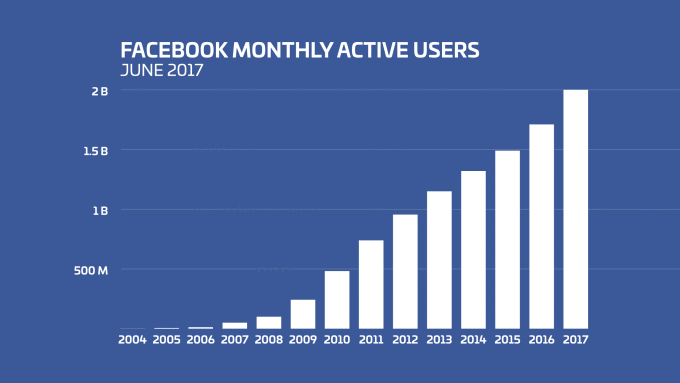
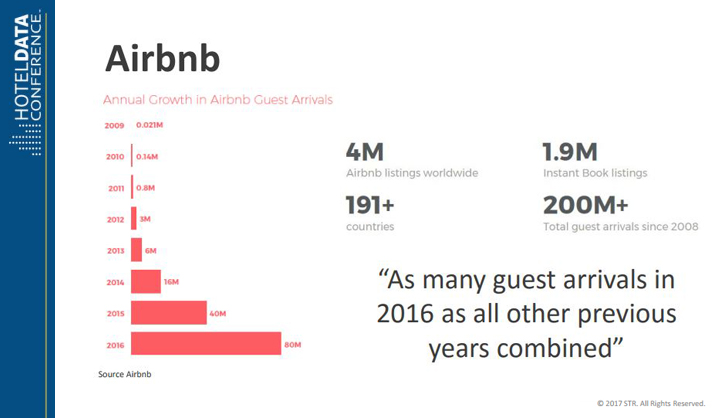
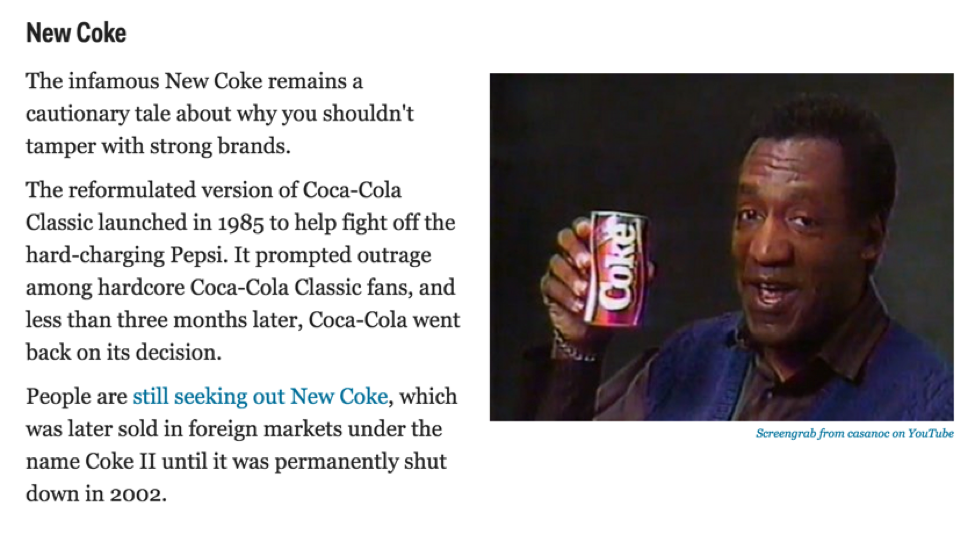
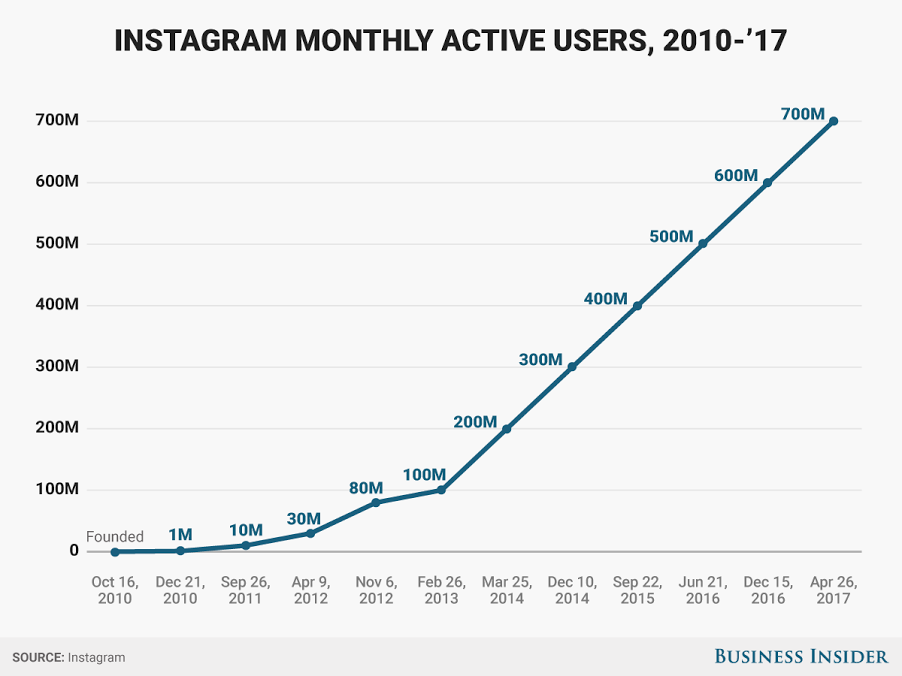






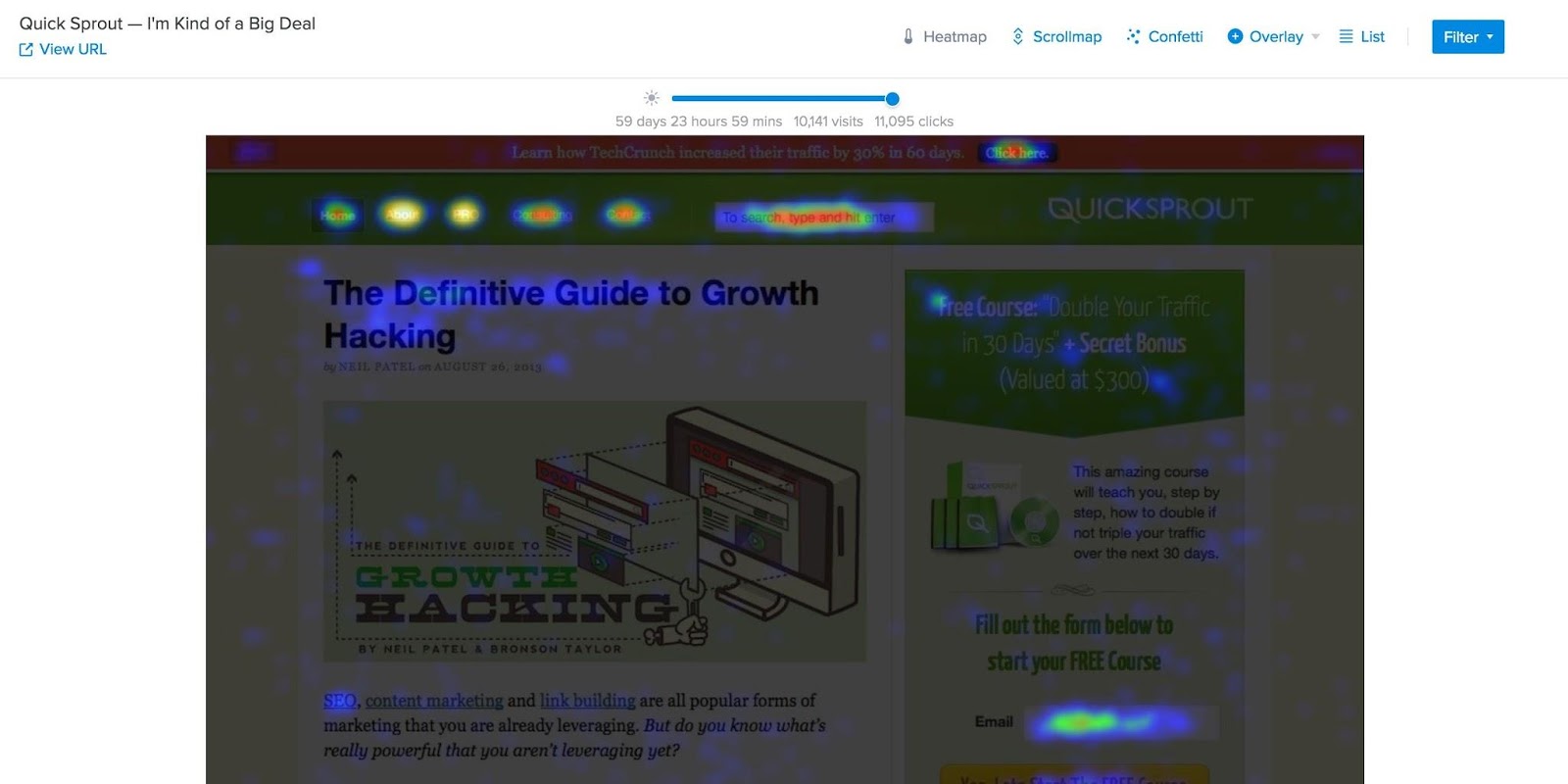

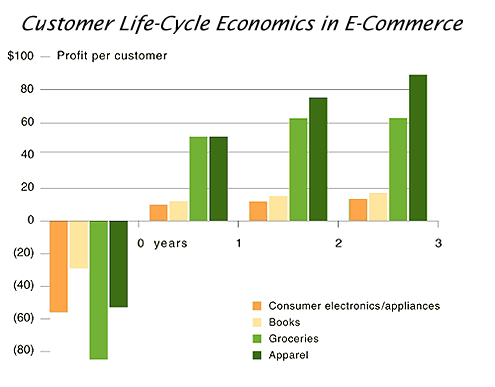

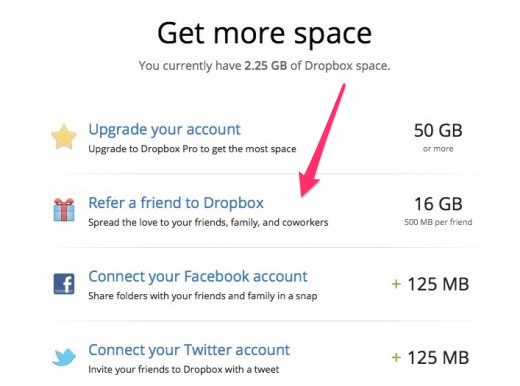







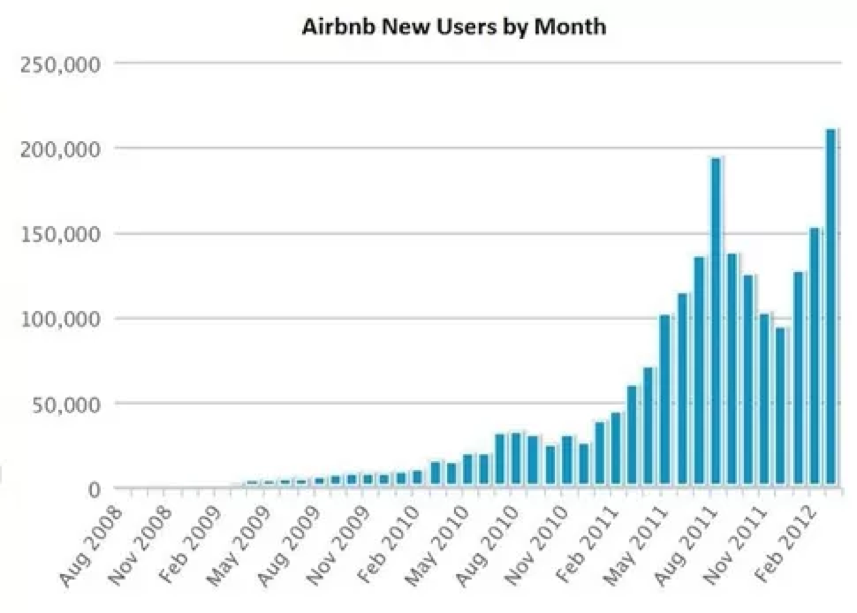



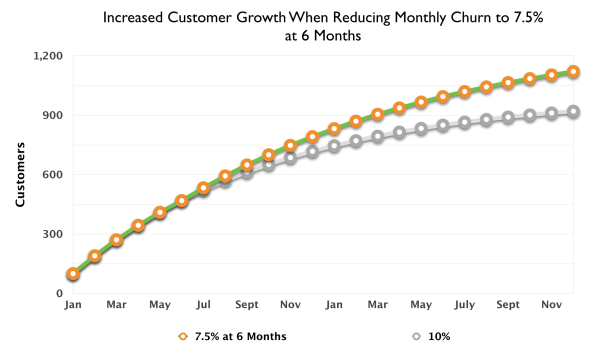



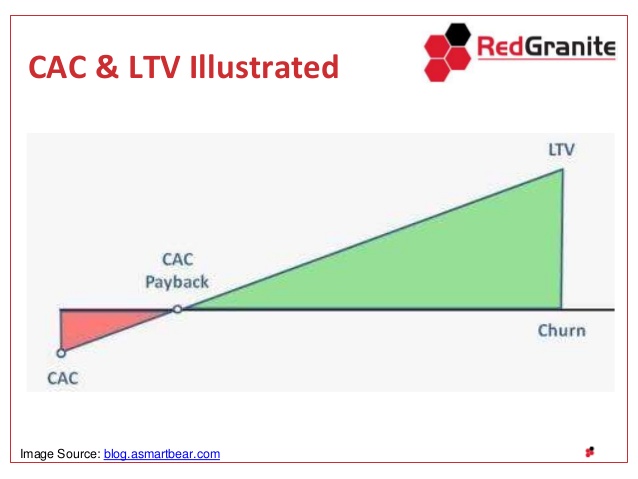
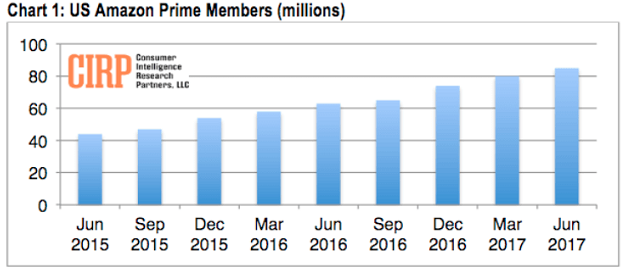
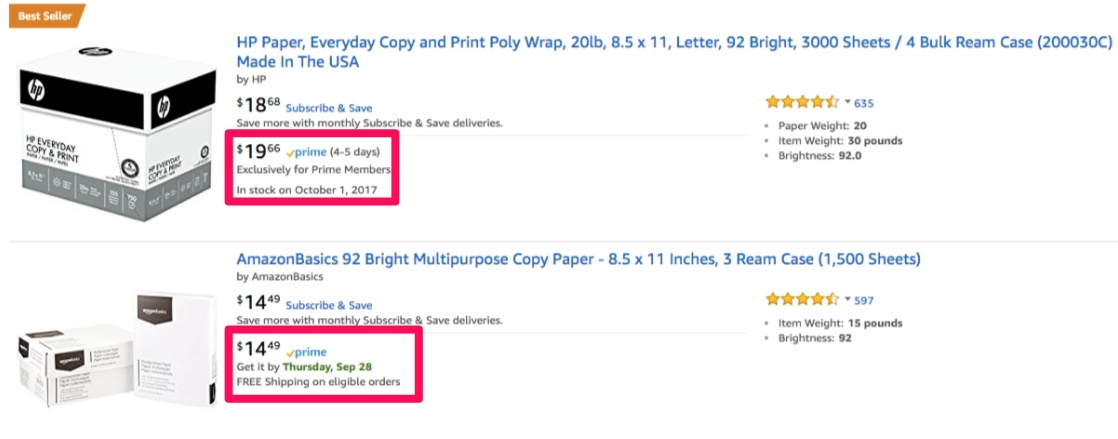
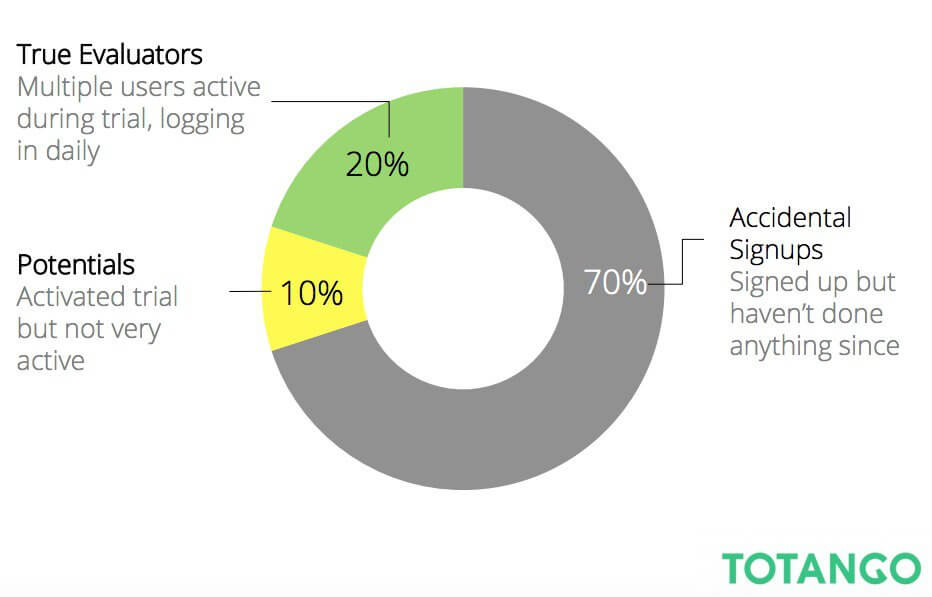
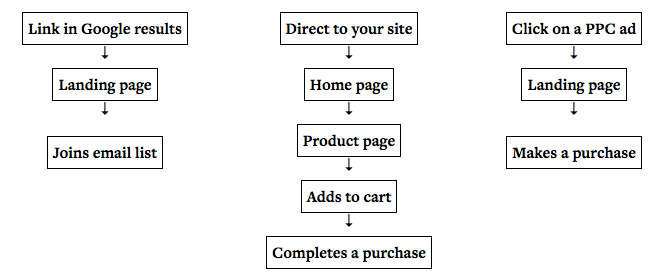



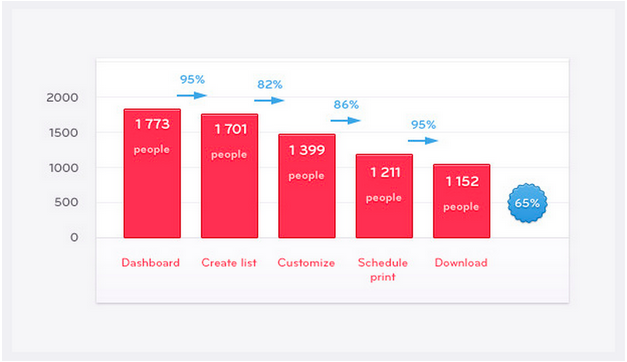


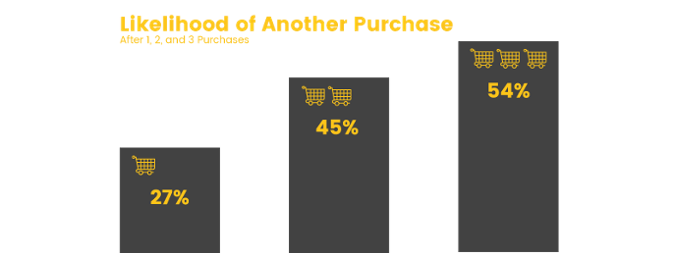
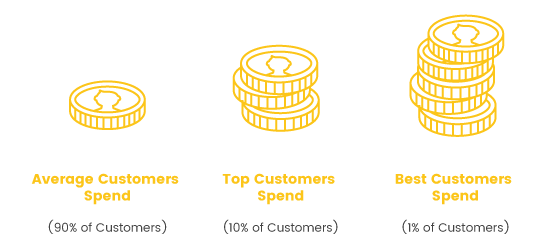
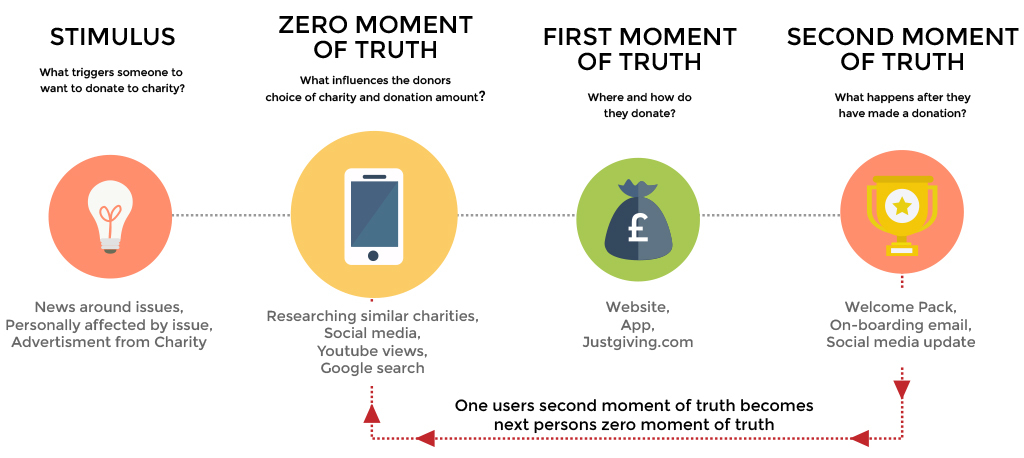


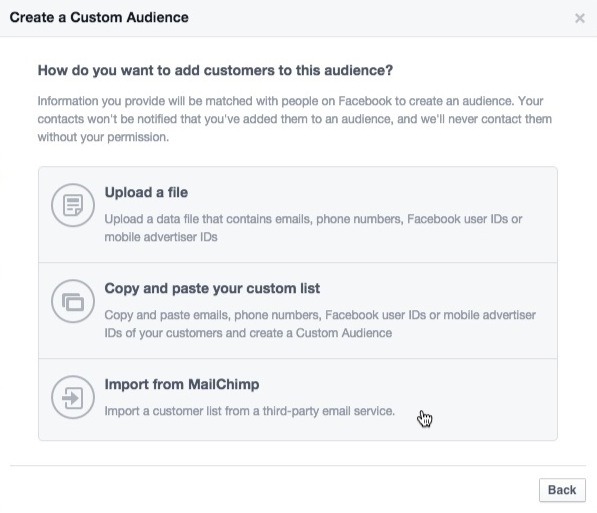
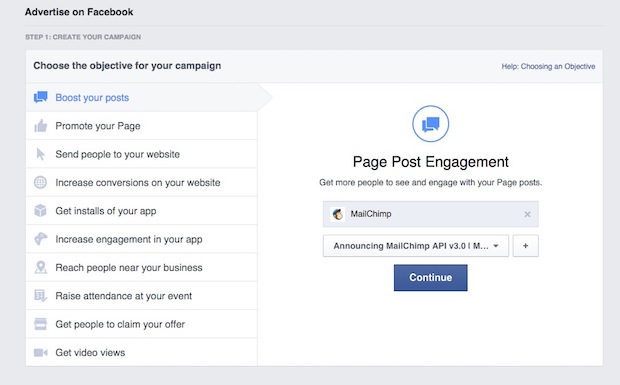
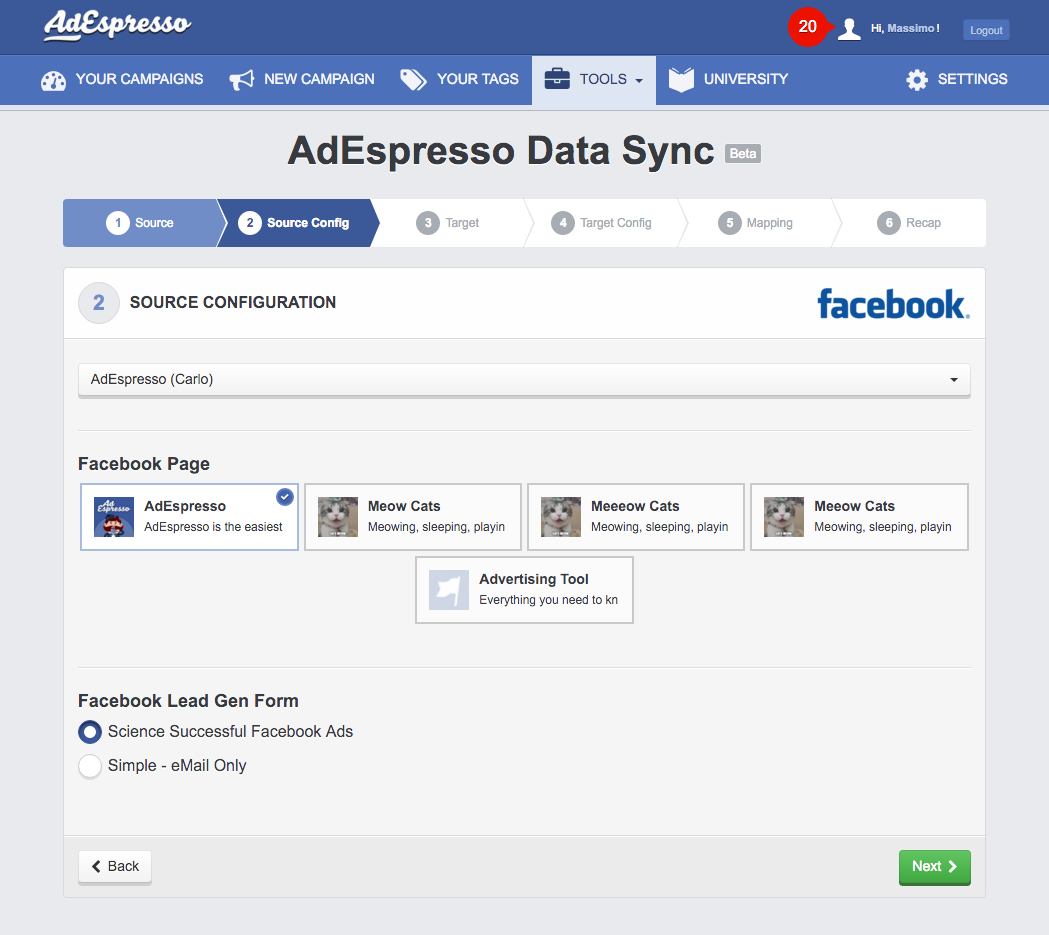
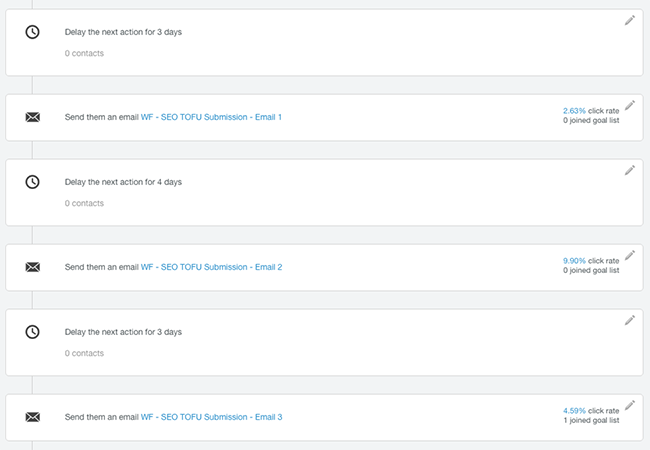
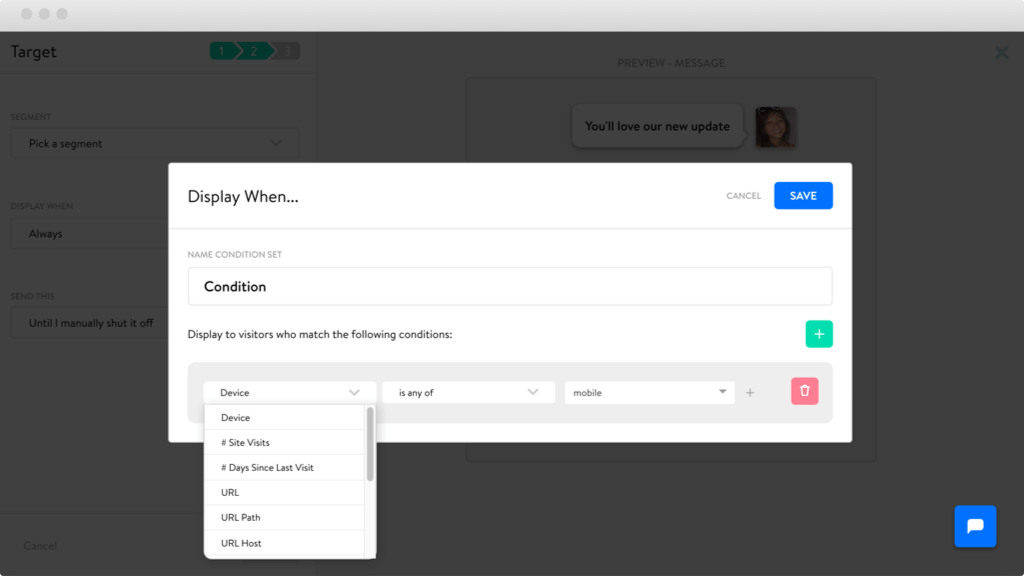

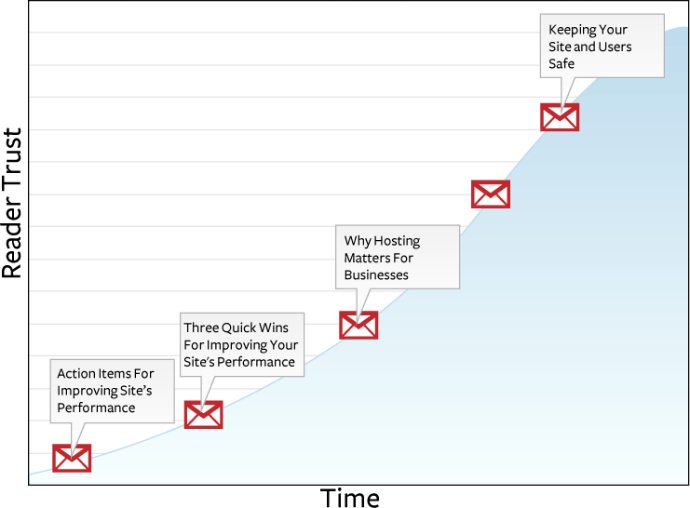
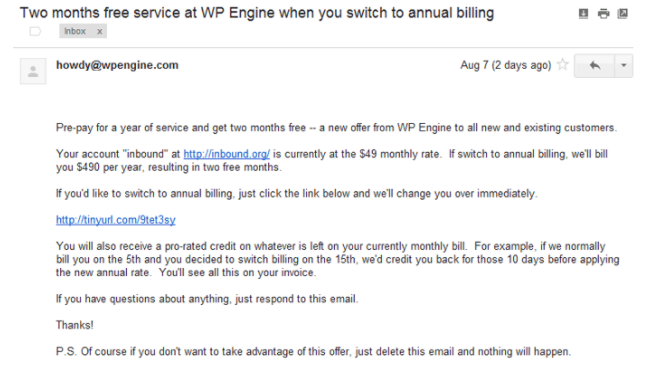

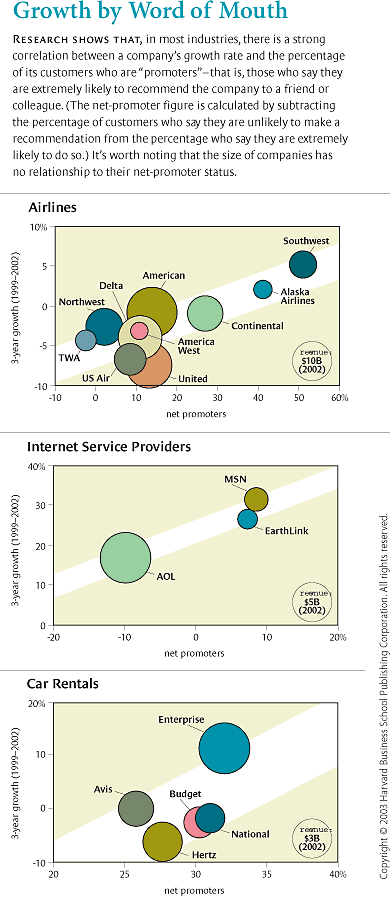

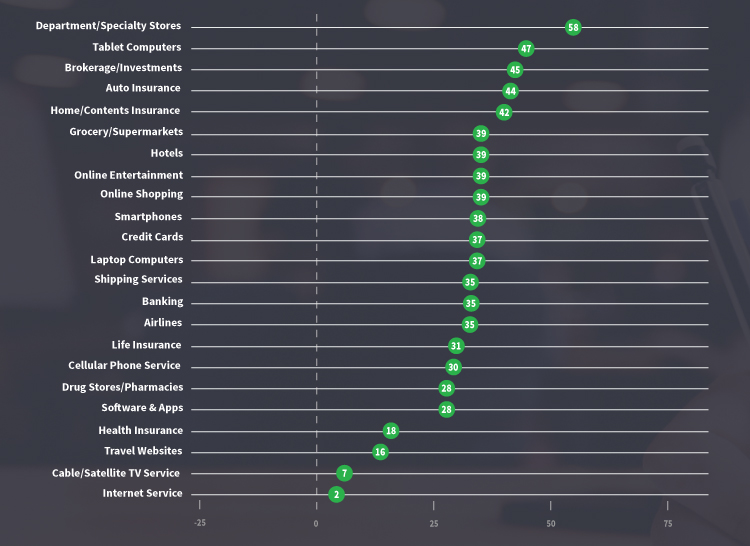
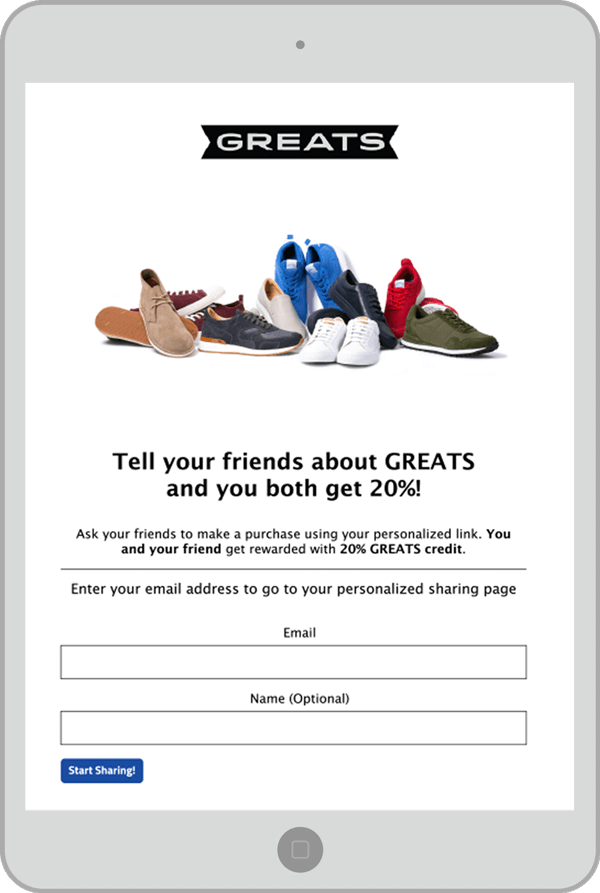
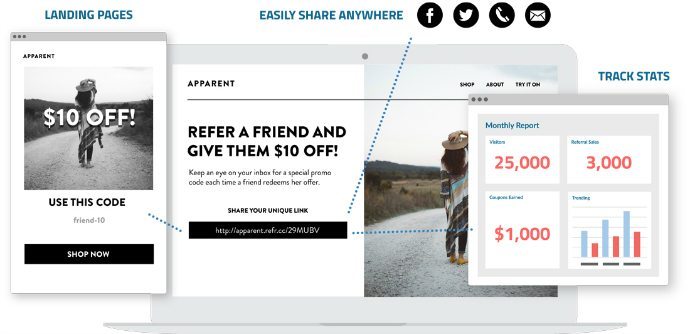


Comments (158)